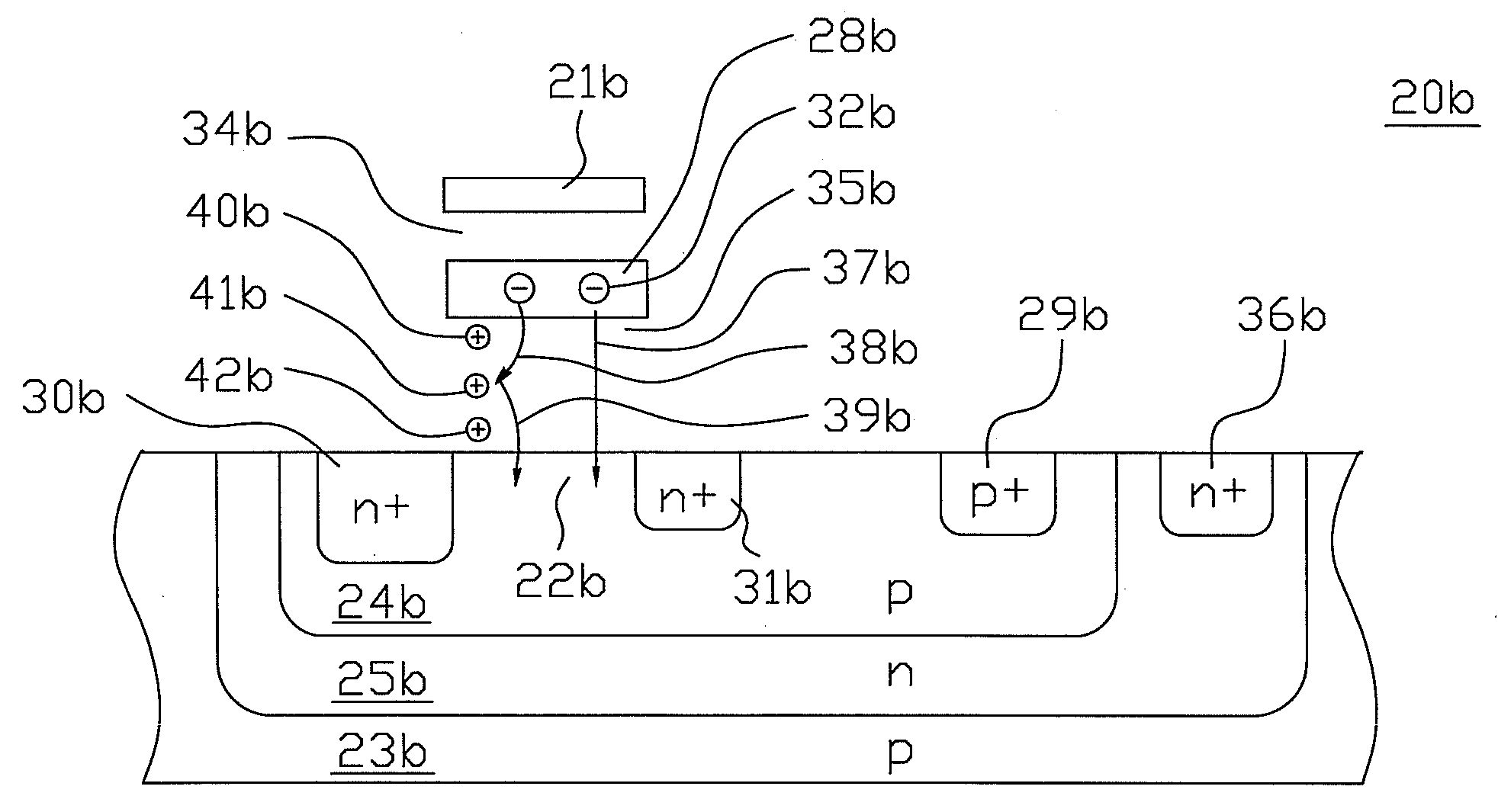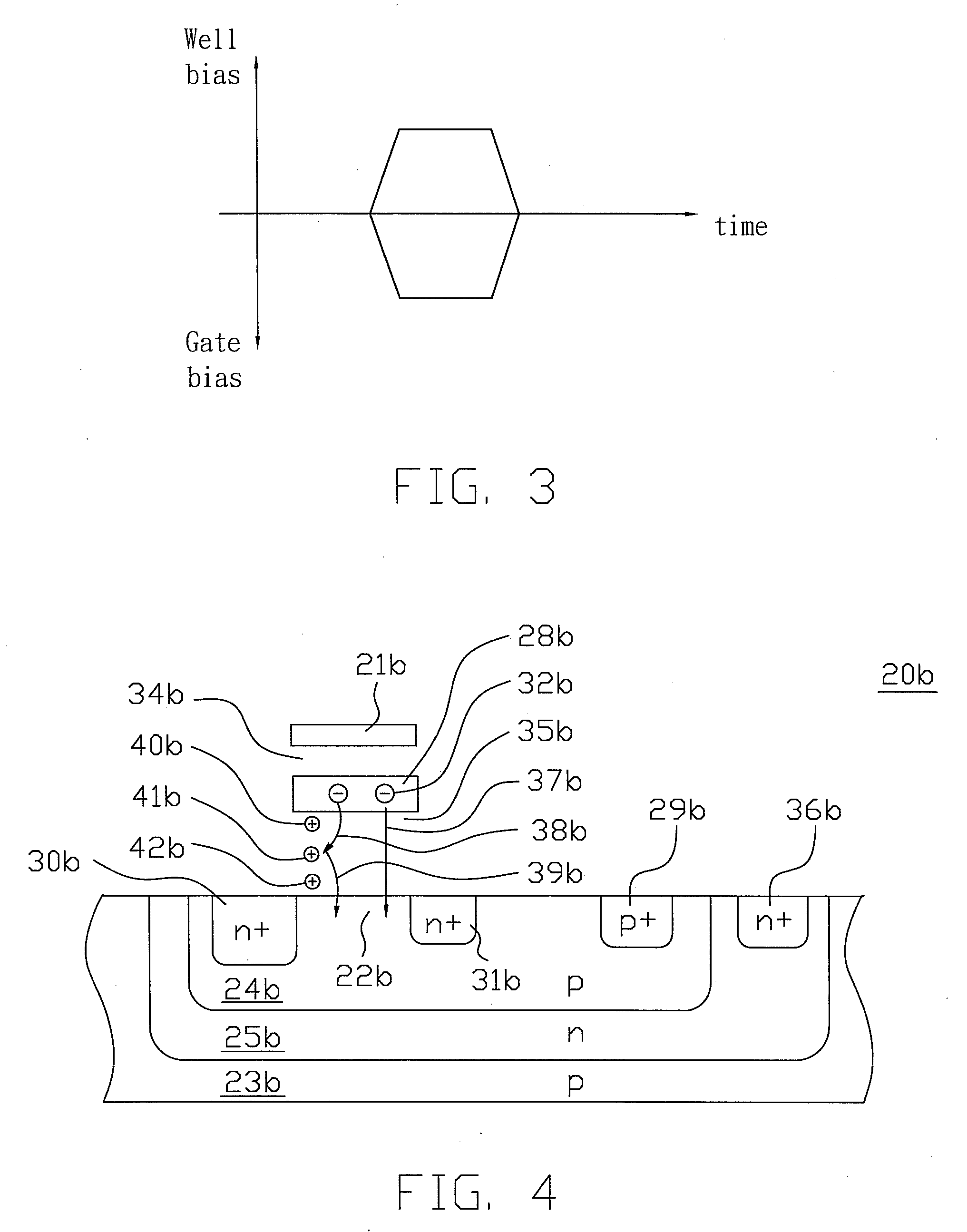Method of erasing a flash eeprom memory
a flash memory and eeprom technology, applied in static storage, digital storage, instruments, etc., can solve the problems of reducing the process of device sizing down, affecting the operation efficiency of the device, so as to reduce the vulnerability to electrical field stress induced reliability issues, the effect of shortening the duration of the biasing pulse and reducing the biasing voltag
- Summary
- Abstract
- Description
- Claims
- Application Information
AI Technical Summary
Benefits of technology
Problems solved by technology
Method used
Image
Examples
Embodiment Construction
[0032]The following detailed description is meant to be illustrative only and not limiting. It is to be understood that other embodiment may be utilized and structural changes may be made without departing from the scope of the present invention. Also, it is to be understood that the phraseology and terminology used herein are for the purpose of description and should not be regarded as limiting. The use of “including,”“comprising,” or “having” and variations thereof herein is meant to encompass the items listed thereafter and equivalents thereof as well as additional items.
[0033]FIG. 4 shows an embodiment of the present invention using an n-type flash EEPROM. The EEPROM device 20b is formed in a p-type triple well 24b, formed within an n-type deep well 25b, formed in a p-type substrate 23b. The device has a control gate 21b that is formed above a floating gate 28b with an inter layer electrically isolating dielectric 34b. The floating gate 28b is isolated from the channel area 22b ...
PUM
 Login to View More
Login to View More Abstract
Description
Claims
Application Information
 Login to View More
Login to View More - R&D
- Intellectual Property
- Life Sciences
- Materials
- Tech Scout
- Unparalleled Data Quality
- Higher Quality Content
- 60% Fewer Hallucinations
Browse by: Latest US Patents, China's latest patents, Technical Efficacy Thesaurus, Application Domain, Technology Topic, Popular Technical Reports.
© 2025 PatSnap. All rights reserved.Legal|Privacy policy|Modern Slavery Act Transparency Statement|Sitemap|About US| Contact US: help@patsnap.com



